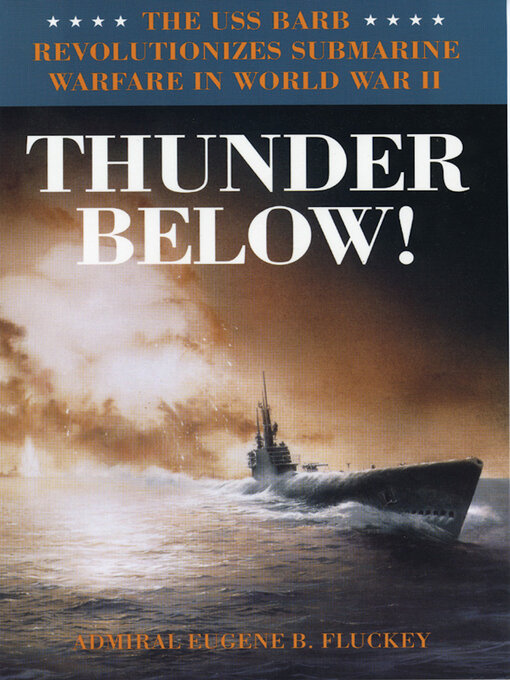- Arts & Crafts
- Fitness and Health
- Outdoor Recreation
- Biography & Memoir
- Business
- History
- All Nonfiction
- See all
-
Description
-
Details
-
Reviews
Under the leadership of her fearless skipper, Captain Gene Fluckey, the Barb sank the greatest tonnage of any American sub in World War II. At the same time, the Barb did far more than merely sink ships-she changed forever the way submarines stalk and kill their prey.
This is a gripping adventure chock-full of "you-are-there" moments. Fluckey has drawn on logs, reports, letters, interviews, and a recently discovered illegal diary kept by one of his torpedomen. And in a fascinating twist, he uses archival documents from the Japanese Navy to give its version of events.
The unique story of the Barb begins with its men, who had the confidence to become unbeatable. Each team helped develop innovative ideas, new tactics, and new strategies. All strove for personal excellence, and success became contagious. Instead of lying in wait under the waves, the USS Barb pursued enemy ships on the surface, attacking in the swift and precise style of torpedo boats. She was the first sub to use rocket missiles and to creep up on enemy convoys at night, joining the flank escort line from astern, darting in and out as she sank ships up the column.
Surface-cruising, diving only to escape, "Luckey Fluckey" relentlessly patrolled the Pacific, driving his boat and crew to their limits. There can be no greater contrast to modern warfare's long-distance, videogame style of battle than the exploits of the captain and crew of the USS Barb, where they sub, out of ammunition, actually rammed an enemy ship until it sank.
Thunder Below! is a first-rate, true-life, inspirational story of the courage and heroism of ordinary men under fire.| A Main Selection of the Military Book Club. Winner of the Rear Admiral Samuel Eliot Morison Award for Naval Literature given by the Naval Order of the United States, New York Commandery. — Naval Order of the United States, New York Commandery
|Eugene B. Fluckey, Rear Admiral, USN (Ret.), was a 1935 graduate of the United States Naval Academy. For his valor under fire, Lt. Cdr. Fluckey was awarded four Navy Crosses and the Congressional Medal of Honor, unequalled by any living American. The crew of the USS Barb received the Presidential Unit Citation and Navy Unit Commendation. In 1989 the U.S. Navy honored Fluckey by naming the nuclear submarine Combat Systems Training Center, the largest and highest building in New London Connecticut, Fluckey Hall, the only building there named for a living person. His last active duty was as NATO Commander in Chief of the Iberian Atlantic Area in Lisbon, Portugal, from which he retired in 1972. In June 1991 he did research for Thunder Below in remote villages on the coast of China. Of his many citations, Fluckey said he was most proud of the one medal no member of his crew was ever awarded: the Purple Heart, given to those wounded under fire.

Kindle Book
- Release date: April 1, 2013
OverDrive Read
- ISBN: 9780252097447
- Release date: April 1, 2013
EPUB ebook
- ISBN: 9780252097447
- File size: 11927 KB
- Release date: April 1, 2013

Loading
Formats
Kindle Book
OverDrive Read
EPUB ebook
subjects
Languages
English
